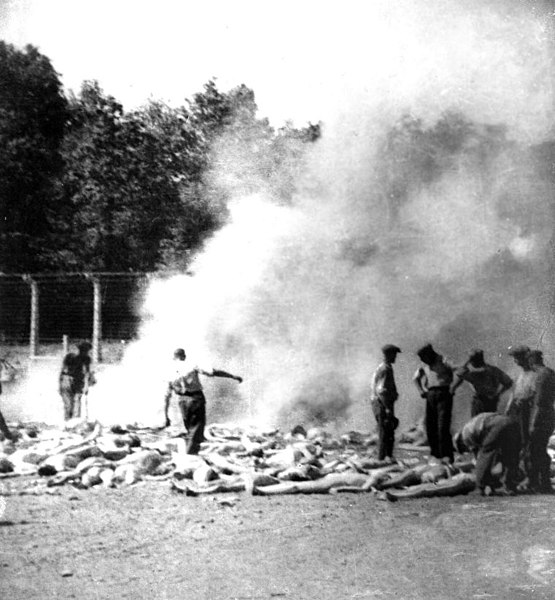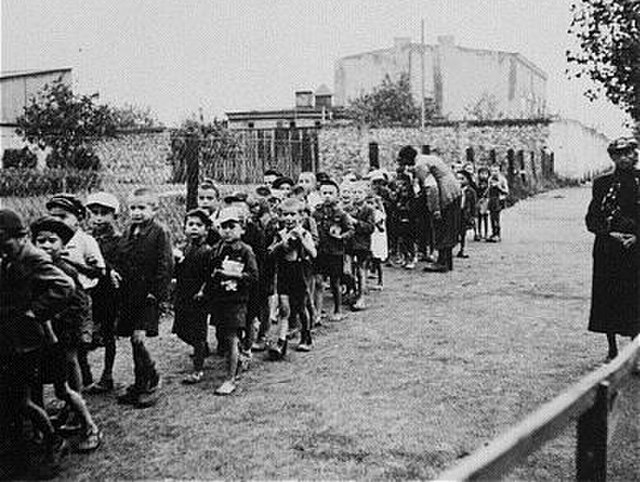Nazi Germany used six extermination camps, also called death camps, or killing centers, in Central Europe during World War II to systematically murder over 2.7 million people – mostly Jews – in the Holocaust. The victims of death camps were primarily murdered by gassing, either in permanent installations constructed for this specific purpose, or by means of gas vans. The six extermination camps were Chełmno, Belzec, Sobibor, Treblinka, Majdanek and Auschwitz-Birkenau. Extermination through labour was also used at the Auschwitz and Majdanek death camps. Millions were also murdered in concentration camps, in the Aktion T4, or directly on site.
Extermination camp
Two of the four crematoria at Auschwitz II (Birkenau).
Members of the Sonderkommando burned the bodies of victims in the fire pits at Auschwitz II-Birkenau, when the crematoria were overloaded. (August 1944)
Jewish children during deportation to the Chełmno extermination camp
Holocaust victims were people targeted by the government of Nazi Germany based on their ethnicity, religion, political beliefs, disability or sexual orientation. The institutionalized practice by the Nazis of singling out and persecuting people resulted in the Holocaust, which began with legalized social discrimination against specific groups, involuntary hospitalization, euthanasia, and forced sterilization of persons considered physically or mentally unfit for society. The vast majority of the Nazi regime's victims were Jews, Sinti-Roma peoples, and Slavs but victims also encompassed people identified as social outsiders in the Nazi worldview, such as homosexuals, and political enemies. Nazi persecution escalated during World War II and included: non-judicial incarceration, confiscation of property, forced labor, sexual slavery, death through overwork, human experimentation, undernourishment, and execution through a variety of methods. For specified groups like the Jews, genocide was the Nazis' primary goal.

Jews delivered to Chełmno death camp were forced to abandon their bundles along the way. In this photo, loading of victims sent from the ghetto in Łódź in 1942
A photograph depicting Polish Jews captured by Germans during the Warsaw Ghetto Uprising, May 1943
Polish priests and civilians in Bydgoszcz's Old Market Square, 9 September 1939. The Polish Church experienced brutal persecution under Nazi occupation.
Naked Soviet prisoners of war in Mauthausen concentration camp








